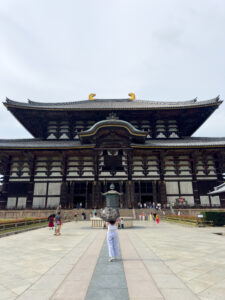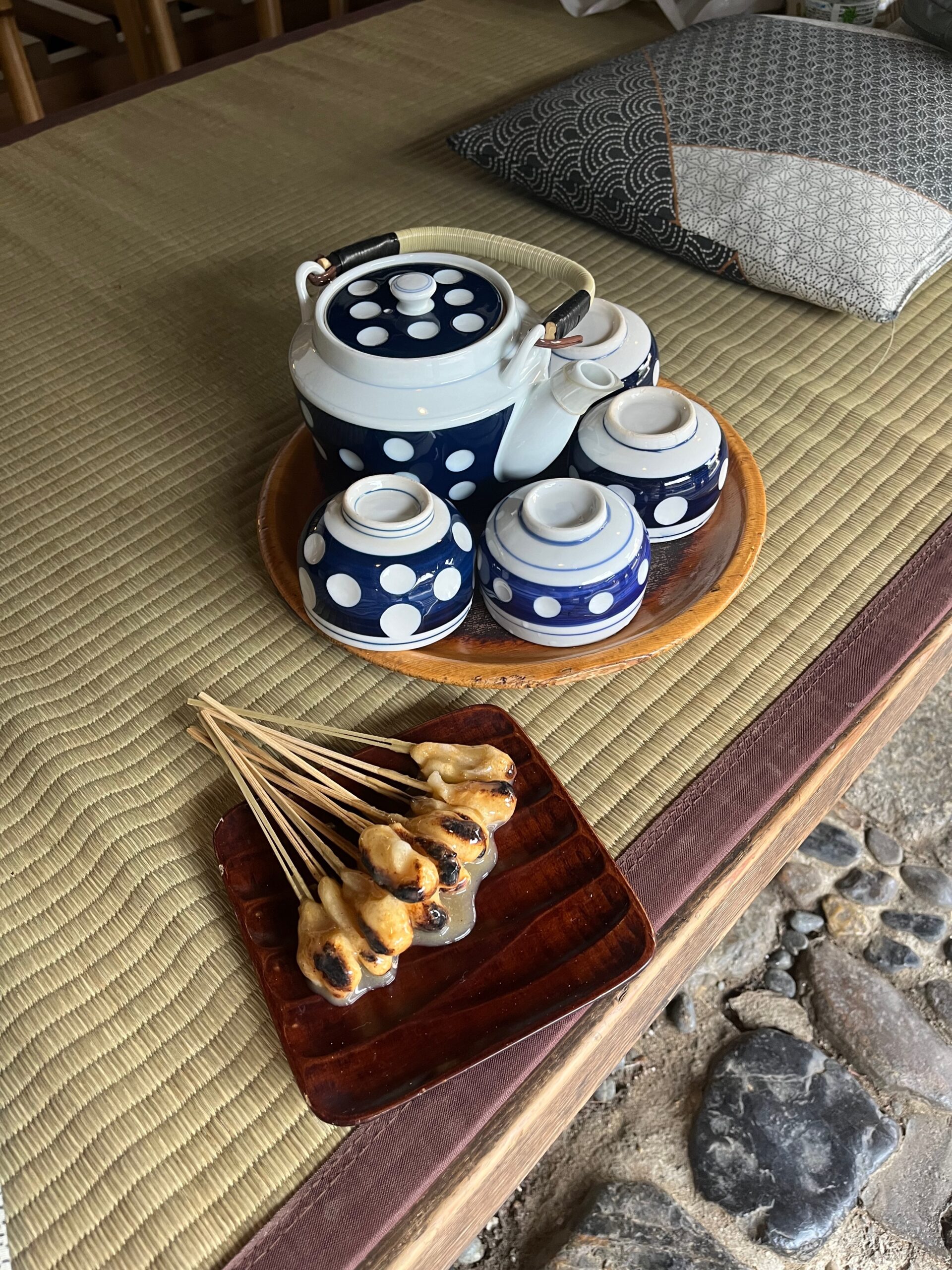
As I embarked on my journey to Kyoto, I pondered the possible discoveries awaiting me. I had no conceivable idea how the food, scenery and transportation would differ from my previous trip to Tokyo.
I was relieved when a friend gave me some guidance and recommended that I look into the teahouse Ichimonjiya Masuke. After doing some research, I discovered that in addition to being a teahouse, it also has a rich history dating back 1,000 years. Ichimonjiya Wasuke was built in the year 1000 A.D. alongside the Imamiya Jinja Shrine. The teahouse was built as a place for travelers to get a drink and snack while visiting the shrine.
Originally, the people used the teahouse’s rice cakes as an offering to the gods, in exchange for their safety from ailments and famine. After making their offerings, the teahouse would proceed to skewer some rice cakes onto sticks of bamboo, roast them and serve them to visitors. They believed that eating the roasted rice cakes would also protect them from ailments.
Now, these rice cakes are known as aburi mochi, and they are served with a miso sauce. I wanted to visit this teahouse to experience this traditional form of mochi.
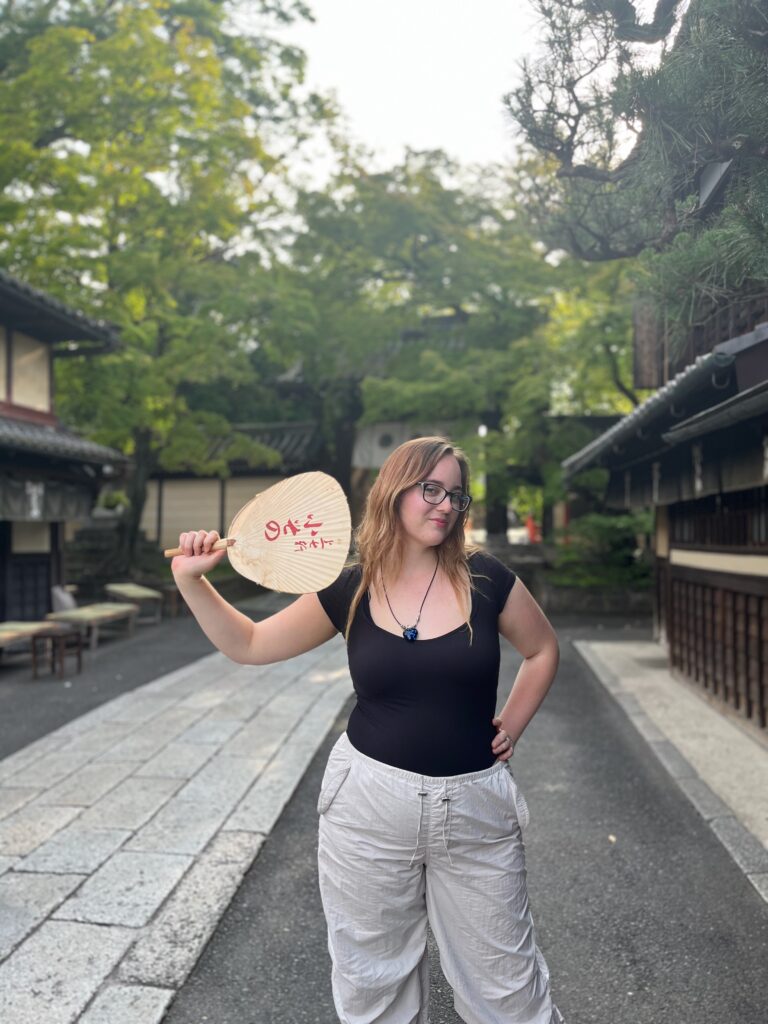
When I entered the teahouse, I was pleasantly surprised to see how traditionally Japanese the aesthetic of the teahouse is. There is a cobblestone floor that leads you into the structure of the open-air tea room. The tea room itself is so open to the natural elements that it feels as if it is one with nature and the outside world.
Alongside the stone floor and open walls comes the lack of tables and chairs. When you take a look around, you will immediately notice that the only furniture is elevated mats. These traditional Japanese mats are known as tatami and are traditionally used for sitting and flooring. On top of these mats, I found pillows and fans, which made me feel like this establishment truly cares about the comfort of its customers.
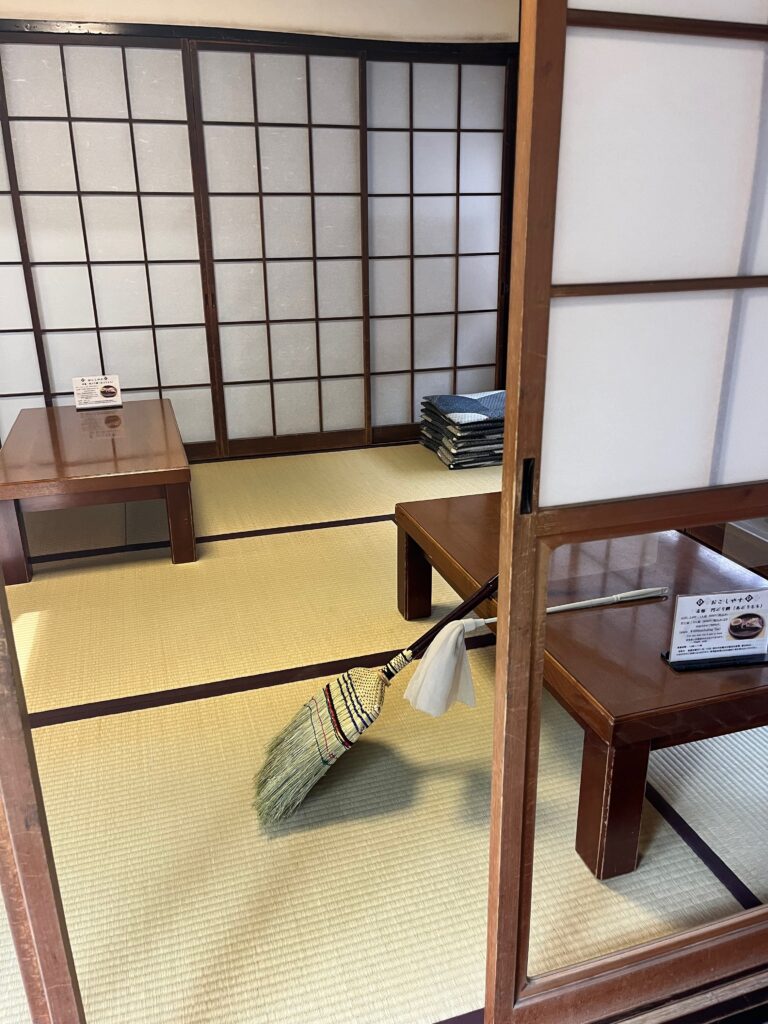
When my server came over to my mat and asked me what I would like, I was able to take a glimpse at the pricing and saw that a plate of aburi mochi was only 600 yen (about $3.80 USD). I wasn’t very hungry, so I only ordered one plate.
Another interesting thing I noticed is that the only thing on their menu is aburi mochi. It seems that through the years, their menu has never changed. As I waited, the server brought me a complimentary pot of roasted green tea which I have learned is a traditional practice in Japanese teahouses.
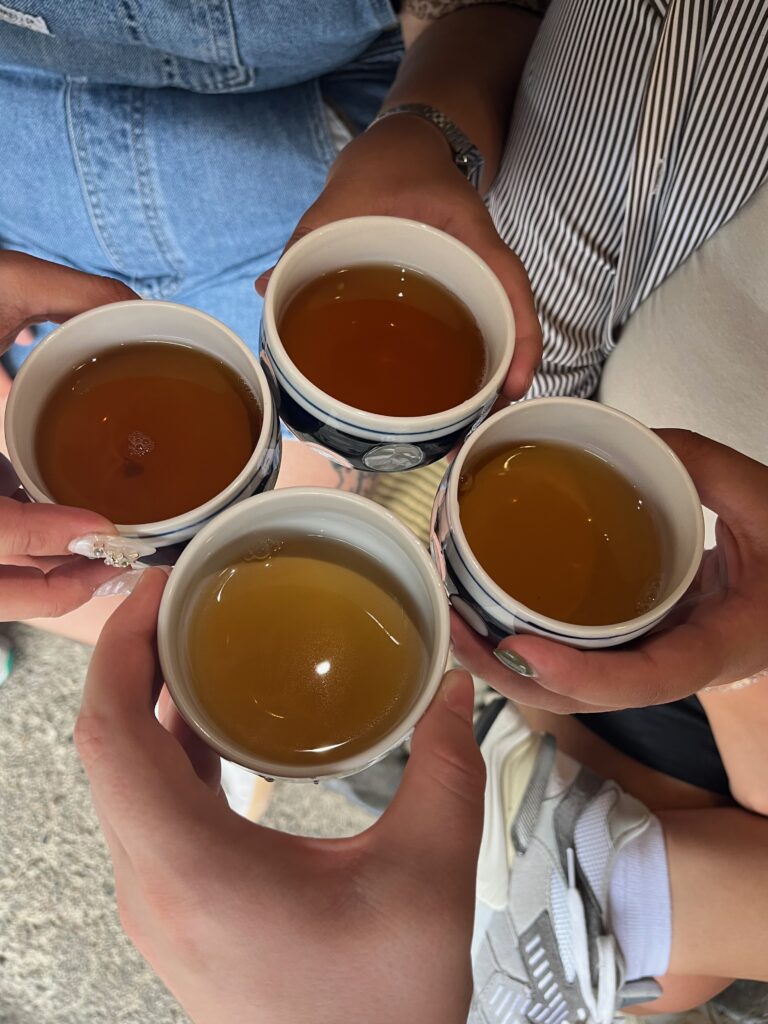
The refreshing tea coupled with the serene atmosphere made me very relaxed. When my mochi finally arrived, I was surprised to see how elongated they were. The only mochi I’ve ever seen has been rounded, powdered, filled with ice cream and from a Costco freezer.
This mochi, however, was longer, imperfect, roasted and covered in a sauce. I was very excited to try it. My first bite into the aburi mochi was well worth the wait. The lightly charred rice cakes with the slightly sweet and savory miso sauce were a satisfying confectionary delight for my taste buds. I was completely enamored with this tempting treat.
I would love to return if I am ever back in Kyoto, and I highly recommend this to anyone that is going there as well. It’s closed on Wednesday, but it’s open every other day from 10 a.m. to 5 p.m.
If you ever get the chance to go, I would highly recommend that you take it. How often is it that you get to enjoy a tradition in a place that’s over a thousand years old?







